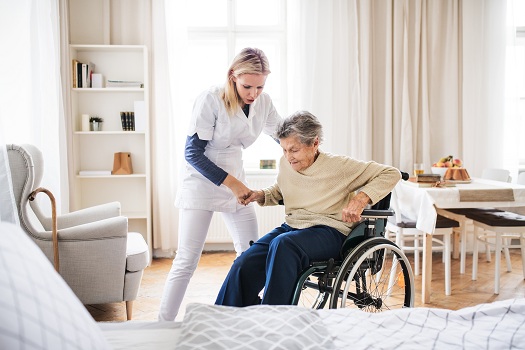For individuals with mobility challenges due to age, illness, or injury, maintaining independence and quality of life can be a daily struggle. In these situations, mobility and transfer assistance caregiving services emerge as indispensable lifelines. These services provide essential support, not just in terms of physical assistance but also emotional encouragement and empowerment. In this blog post, we will delve into the crucial role of mobility and transfer assistance caregiving services and how they make a positive impact on the lives of those they serve.
Understanding the Need
Mobility issues can affect people of all ages and backgrounds. Whether it’s a senior citizen dealing with age-related mobility decline, someone recovering from surgery, or an individual with a long-term disability, maintaining mobility and independence is a fundamental human need. Mobility and transfer assistance caregiving services step in to bridge the gap between limitations and living life to the fullest.
The Core Components of Mobility and Transfer Assistance Care:
Physical Assistance
The primary objective of these caregivers is to offer physical support to individuals in need. This can include helping with activities such as transferring from a bed to a wheelchair, moving around the house, and getting in and out of vehicles.
Safety and Prevention
Caregivers are trained to ensure the safety of the person they are assisting. This includes proper lifting techniques, fall prevention strategies, and creating a safe home environment.
Personalized Care Plans
Every individual is unique, and so are their mobility challenges. Caregivers develop personalized care plans tailored to the specific needs and preferences of the person receiving care.
Emotional Support
Beyond the physical aspect, these caregivers provide emotional support. They offer companionship, a friendly ear to listen, and encouragement to maintain a positive outlook on life.
Promoting Independence
The goal of mobility and transfer assistance caregiving is not just to provide help but also to empower individuals to regain as much independence as possible. Caregivers encourage clients to participate in daily activities and hobbies.
The Impact on Quality of Life
The positive impact of mobility and transfer assistance caregiving services extends far beyond the physical realm:
Enhanced Quality of Life
By enabling individuals to move and engage in daily activities, these services significantly enhance the overall quality of life.
Reduced Stress and Isolation
For many clients, caregiving services alleviate stress and reduce feelings of isolation. Having a reliable and compassionate caregiver can make a world of difference in their emotional well-being.
Peace of Mind for Families
These services also provide peace of mind to the families of those receiving care, knowing that their loved ones are in capable hands.
Conclusion
Mobility and transfer assistance caregiving services represent a beacon of hope for individuals facing mobility challenges. They embody the spirit of compassion, dignity, and empowerment. Through physical assistance, emotional support, and personalized care plans, these caregivers help individuals regain their independence and experience a fuller, more enjoyable life. As we recognize the essential role they play in enhancing the lives of those they serve, we celebrate their unwavering dedication to promoting independence and well-being.






